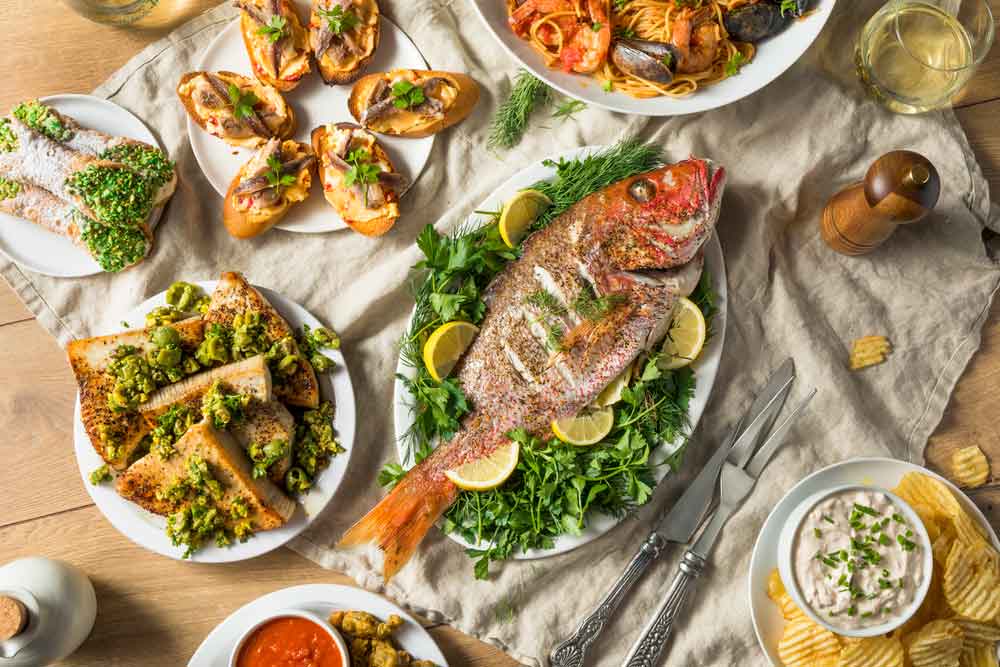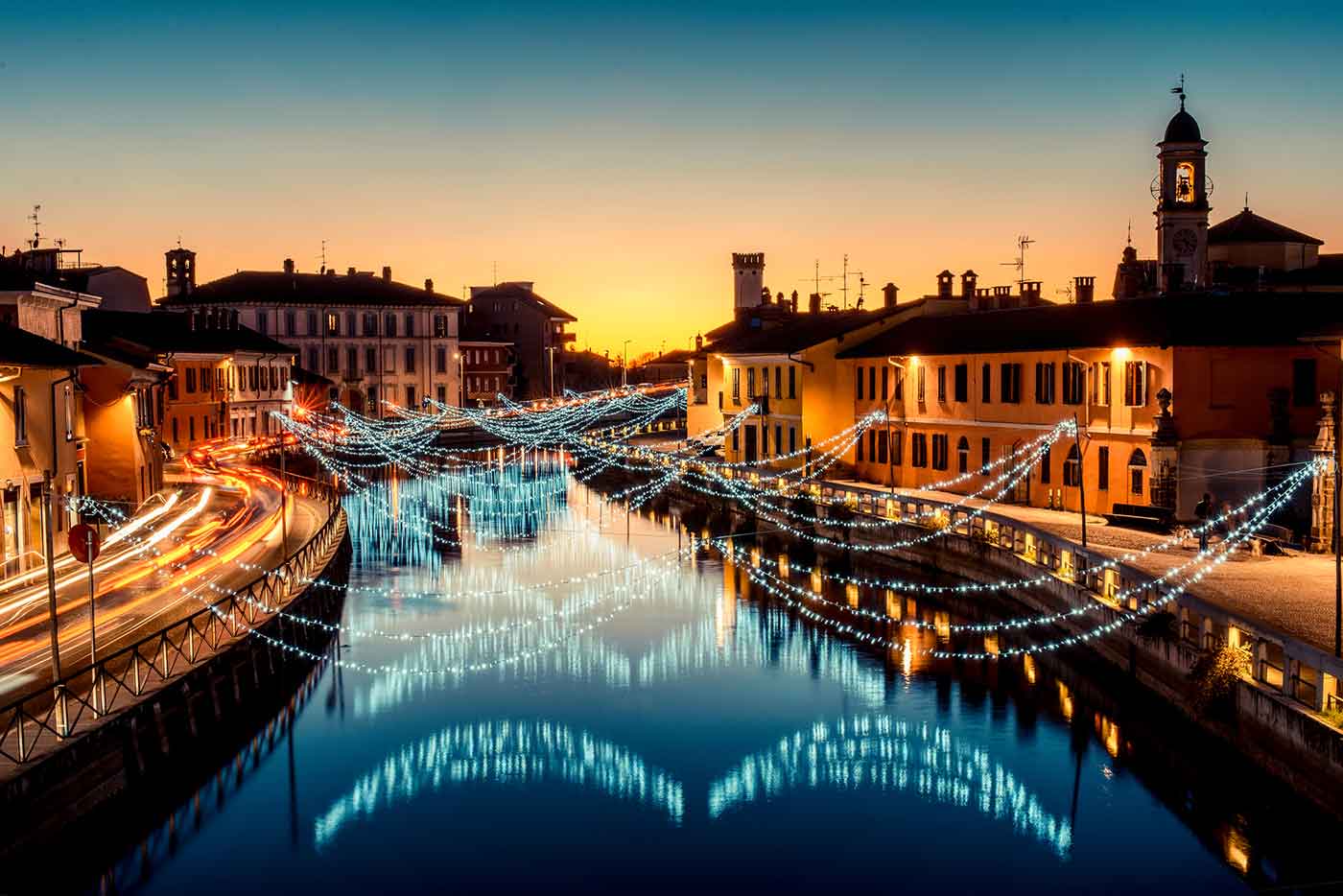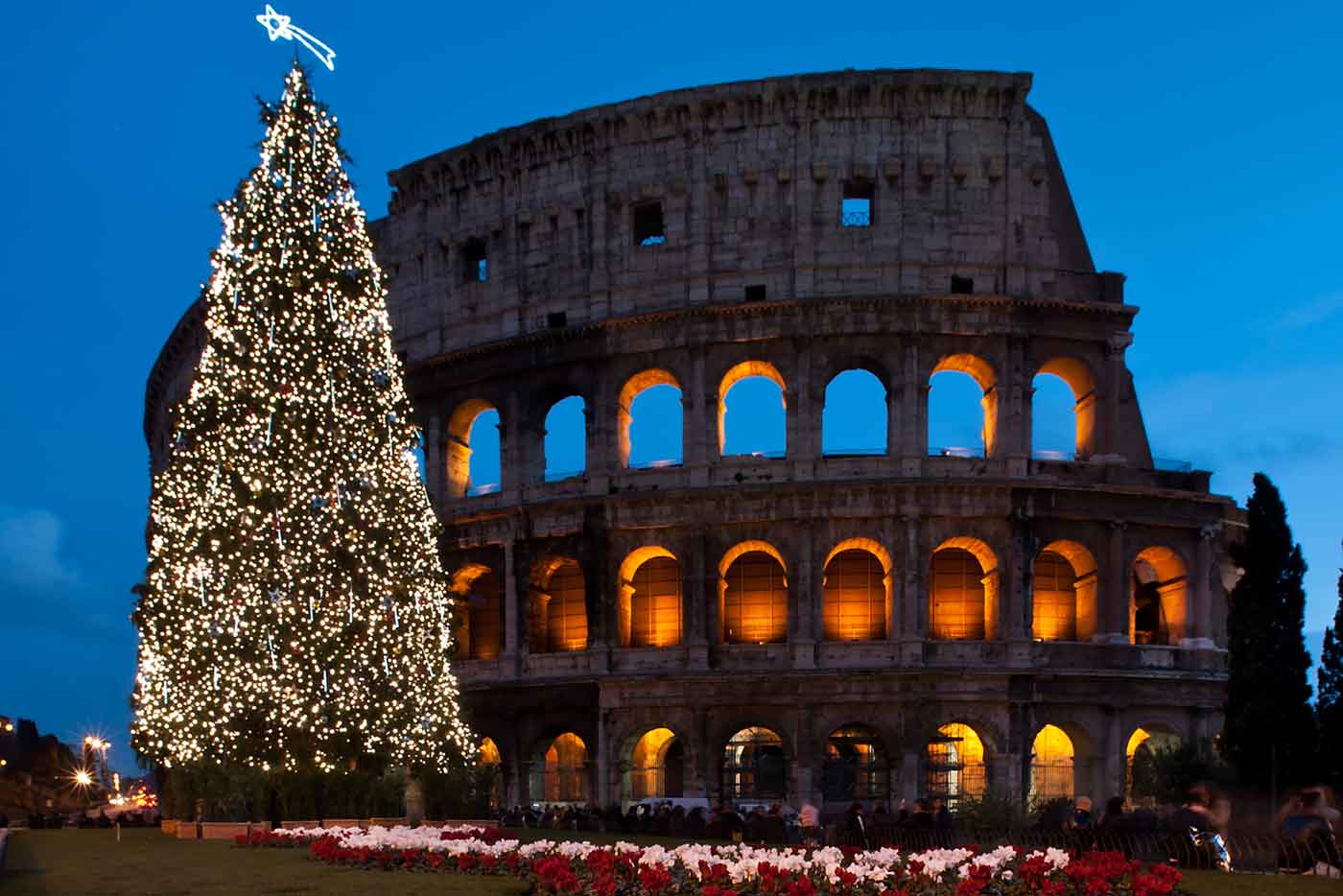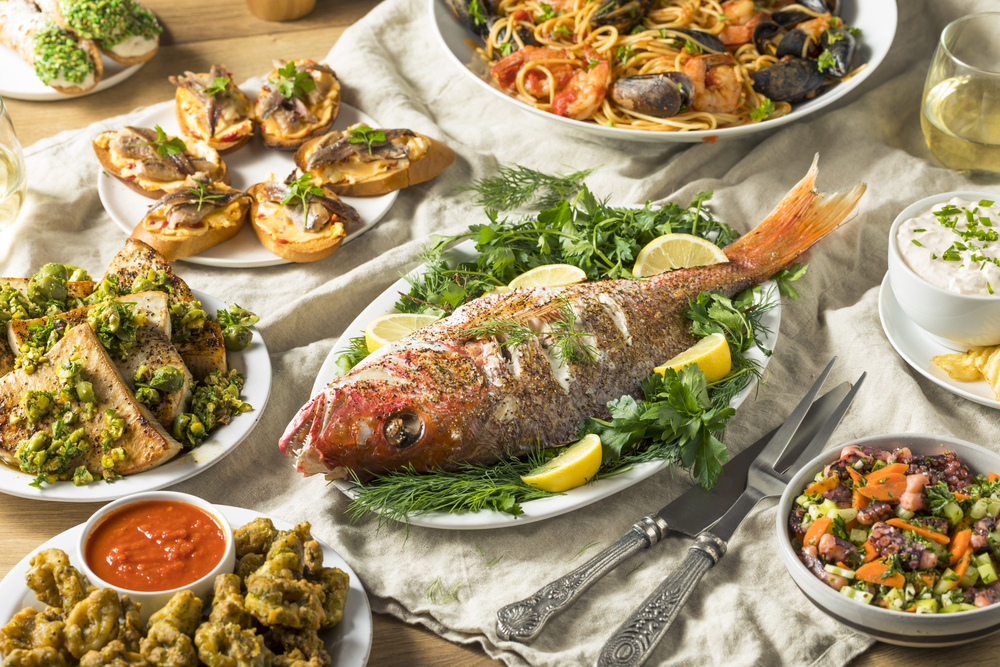One of the best traditions about Christmas is that it’s a time when loved ones come together to celebrate. And what better way to bring the magic of Christmas traditions from around the world into your home than by incorporating some Italian customs?
Italians have celebrated Christmas for centuries, and their traditions are steeped in history and meaning. This blog post will look at the timeless Italian Christmas traditions in Italy and how you can bring them into your celebrations!
Table of Contents
How to say ‘Merry Christmas’ in Italian
Italian for “Merry Chrismas”: “Buon Natale!”
Pronunciation: bwohn nah-TAH-leh
The classic “Merry Christmas” phrase in Italian is “Buon Natale!”. Like in other parts of the world, Christmas brings Italians joy and happiness. And it’s no different regarding how they greet each other during the holiday season. This phrase translates to ‘good Christmas’ in English and is sure to spread cheer during the festive season!
Italians greet each other with this phrase in the weeks leading up to Christmas, and it’s also traditionally said to guests when they arrive at your home on Christmas day. The combination of the Italian spirit and the holiday cheer makes Christmas in Italy so special.

What is Christmas like in Italy for Kids?
If you’re wondering what it’s like on Christmas for kids in Italy, it’s not much different that for kids in America but the festivities do go on for a bit longer and is slightly different. For Italian children, Christmas is a time of anticipation and excitement. On the evening of December 24th, kids hang their stockings above the fireplace in hopes that La Befana — a friendly witch — will come and fill it with treats.
The traditional Italian Nativity scene is also an important part of Christmas in Italy — many families will set up elaborate scenes filled with figurines depicting the birth of Jesus. These scenes are often placed near the Christmas tree and remind children (and adults!) of the true meaning of Christmas.
Children in Italy can also look forward to the traditional Christmas feast on December 25th, which includes a variety of Italian delicacies like roast meats, seafood dishes, and special desserts.
On Christmas day in Italy, it’s traditional to give away sweets as gifts. Some common sweet treats that Italians love at this time of year are panettone (sweet bread with candied fruits and raisins) and torrone (nougat-like candy made of honey, sugar and almonds).
These treats are often served at the table with sparkling prosecco to celebrate the special occasion. Children in Italy can also look forward to receiving chocolate coins or special Christmas figures made of chocolate, which are given out during the holiday season.
The tradition of La Befana,
The most beloved Christmas figure in Italy is La Befana, who plays the role of Santa Claus. La Befana is an old woman who rides on a broomstick and delivers presents to children’s homes on Epiphany eve (January 5th).
According to legend, the Three Wise Men (Magi) stopped at her house while searching for baby Jesus. They asked if La Befana would join them on their search, but she refused and stayed home. Later that night, La Befana regretted her decision and decided to fly around the world on her broomstick, looking for Jesus. Despite tracing the same star, Mary couldn’t locate the manger until after the Wise Men had already found it on January 6th – otherwise known as Epiphany.
In Italy, the Epiphany marks the end of Christmas and is celebrated with live nativity scenes, a grand procession through the town, and, most notably – La Befana’s arrival! This day is symbolized when the three Wise Men arrive at the manger carrying gifts. For those who love sugar-coated treats, this is truly an exciting event, as there are sweets galore to be enjoyed!
Christmas Eve and Christmas Day Dinner
Christmas is a season of plenty, and Italians celebrate with copious feasts spanning up to seven hours! Everyone in the family brings their delectable recipes, giving each gathering its unique flavour. Depending on where you live in Italy, your celebration can vary greatly – but all meals are united by one theme: abundance, or abbondanza, as the Italians call it.
The traditional Christmas dinner in Italy usually begins with assorted antipasti, followed by a primo (such as lasagna or ravioli). The main course usually consists of roast meat, such as turkey, pork loin, or beef, accompanied by sides such as potatoes, mushrooms and onions. Desserts like tiramisu and panettone are a must-have, as well as the classic Italian Christmas cake called Panforte.
La Vigilia di Natale (Christmas Eve) Meals

At midnight on Christmas Eve (la Vigilia), Italians end their meal with the traditional toast of spumante or prosecco. This marks the beginning of Christmas Day and is followed by more presents and eating!
The fish and seafood
On Christmas Eve, Italians observe the tradition of La Vigilia di Natale and abstain from eating meat. This is to commemorate the miracle of Jesus and to honour his sacrifice.
On the morning of the 24th, if you venture to a fishmonger in any Italian city, it will burst with hundreds of plastic bags resting on ice. Each bag is adorned with someone’s and filled with an array of twelve distinct fish species.
The emphasis is on bringing flavour and variety to the table. There are endless opportunities to explore, whether in terms of fish or its cooking style. Depending on where you’re located in Italy, your seafood feast might begin with a frittura di pesce (fried fish) that could feature calamari, baby octopus or paranza (mixed tiny fish). As you make your way up northward, don’t forget to check odon’tccalà (salt cod), while down south, try some capitone (eel)!
The 3P (Pasta, Potatoes and Pastries)
Italians usually move on to a selection of pasta dishes after the fish course. Every region has its variation, but two popular classics are spaghetti all amatriciana and fettuccine al burro.
Accompanying these mouth-watering dishes is patate alla contadina (roasted potatoes) and a plate of pastries. Some typical Italian Christmas desserts include pandoro, panettone, struffoli and biscotti di natale.
Festa di Natale (Christmas Day) Dinner
In Italy, the Christmas celebrations don’t end on Christmas Day. On la Festa di Natale (Christmas Day), Italians usually gather at a relative’s house and feast throughout the day.
The typical menu usually consists of antipasti such as prosciutto, capocollo and salame. Around the holidays, many regions have a unique tradition of preparing special cured “Christmas salamis” to be enjoyed during the festive season.
Followed by one or two heavy pasta dishes. During the Christmas season, pasta dishes generally contain some meat. An exemplary dish of this genre native to Emilia-Romagna in Italy and renowned worldwide is tortellini en brodo – a succulent blend of beef or capon broth with tiny mouth-watering circles filled with delectable minced meats.
The main course is usually overflowing with meat – from tortellini broth to the succulent boiled meat known as bollito. This dish is often served alongside salsa verde (a zesty green sauce) or mostarda (candied fruit in spiced syrup).
A roasted baby lamb is a delicacy found in Rome, while Baroque Faraona Ripena (stuffed guinea fowl with ground meat and spices) graces tables in many households. To complete the meal, grilled sausages and chops often follow suit.
As the day slowly closes, everyone prepares to indulge in various desserts. Some popular sweets include panettone and pandoro. Panettone and pandoro, two holiday-favourite delicacies of sweet bread-like cake, are often piled high on shop shelves during Christmastime.
Hailing from Milan, Panettone is a light, airy cake that looks like an oversized muffin. It is full of dried fruit and raisins. Verona’s Pandoro “golden bread” has a unique star shape and richer texture than the fluffy panettone. After baking, it is finished with powdered sugar for extra pizzazz!
Celebrating St. Stephen’s Day
On December 26th, Italians celebrate Santo Stefano, or St. Stephen’s Day. This day marks the feast of Saint Stephen and is celebrated in remembrance of his martyrdom through charity and special prayers. The streets that lay silent and empty the previous day are alive and bustling with well-wishers, as it’s traditional for people to visit the nativity scenes inside local churches and make a small donation.
On St Stephen’s Day, Italians bask in the comfort of home with their families and friends, indulging in Christmas leftovers and savouring classic desserts such as torta di mele (apple cake) or torta di ricotta (ricotta cheesecake). This day is a special occasion to relax after the flurry of holiday festivities.
On the famed Santo Stefano day, or “the day of the leftovers,” Italians come together to savour and reclaim all the delicious food they consumed on Christmas Eve and Christmas Day. This is arguably one of (if not) their biggest meals throughout the year! Everyone loves leftovers, so why not enjoy them again? With that in mind, it’s no wonder this special holiday has become a beloved tradition.
The type of leftovers served depends on the family, but some of the most popular Italian leftovers include zampone (stuffed pig’s trotter) and cotechino (a boiled sausage). Transform any leftover pasta into a delectable meal by combining it with some whisked eggs and pouring the mixture onto a hot, greased pan. Flip when golden brown to give each side an irresistible crispiness! Serve this savoury dish, a vibrant salad, and your favourite white wine for a satisfying dinner.
Italian Christmas Traditions
Aside from the delicious food, Christmas in Italy is marked by countless traditions. To start the season, many towns and cities cover their streets with festive decorations and lights to create a magical atmosphere. Some places also host holiday markets where visitors can browse and shop for unique gifts.
The Nativity scene, presepe is a staple of Italian Christmas celebrations. These elaborate manger scenes are often filled with figurines, cribs, and other artisanal decorations that depict the holy family’s journey to Bethlehem. As for the homes that celebrate this tradition, it’s customary to keep these displays until Epiphany (January 6th).
On Christmas Day, families exchange gifts, share stories, and laugh until their sides hurt. While the presents vary from person to person, it’s a tradition for children to receive some treats like coal-like chocolate pieces. This is meant to warn them against being naughty in the following year!
The Italian holiday season ends with the Epiphany feast, where a special cake called “Befana” is served. This dessert is made of puff pastry and filled with candied orange peel, raisins, and other delectable treats. Befana celebrates the Three Wise Men’s arrival in Bethlehem and marks the end of the holiday festivities.
The traditional Christmas festivities in Italy are a delight for all ages, from mouth-watering food to cheerful decorations. No matter where you live, you can try some classic Italian recipes! Buon Natale! (Merry Christmas!)





